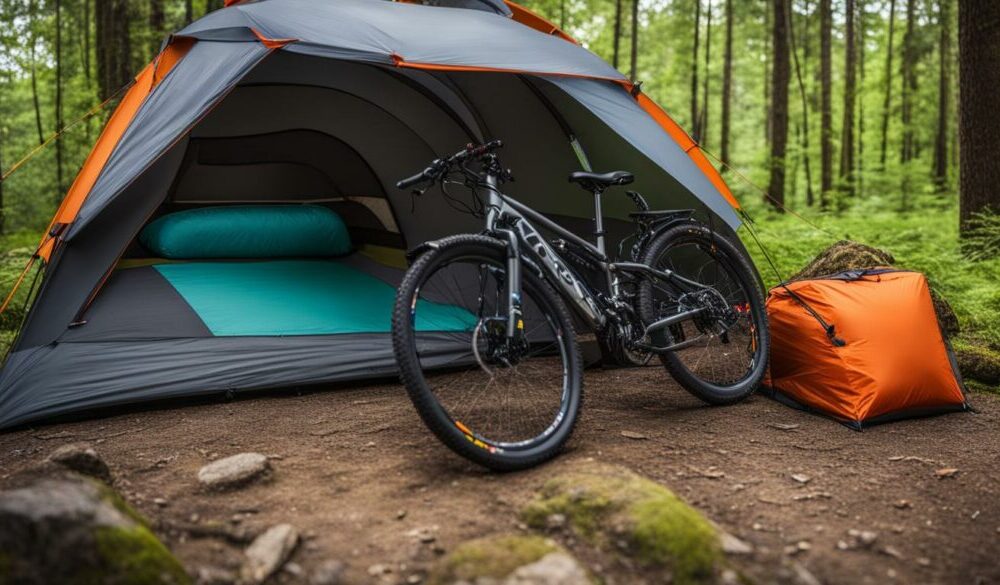How Material Innovation Is Shaping the Next Generation of Camping

One of the greatest aspects of camping is also one of the oldest: nature. Whether you sleep under the stars, trek through the forest, or just spend a little time outside the city, the outdoors has always had a certain draw. But now things are different. Campers were once rough and rugged, capable of roughing it in the wild. Nowadays, camping is a matter of being comfortable, secure, and wise about what you bring along. And driving that change is something very important: material innovation.
When you camp, what you carry with you matters. Your backpack, your tent, your clothing—all are made of different materials, and those materials determine your whole experience. Thanks to science and technology, the new materials and designs are making the camping experience better and better every day. Two very good examples of this are safari tents and nylon fabric. They are not normal products. They reflect how much camping gear has advanced in design and testing.
Why the Right Fabric Matters
Let us begin with the material. Outdoor equipment has to be durable, lightweight, and able to withstand harsh weather. This is where nylon enters the picture. Nylon is a synthetic fiber that has gained significant popularity in outdoor equipment. It is used for backpacks, jackets, tents, and so on.
One of the companies that utilizes nylon is Ruibao. The company manufactures a form of nylon fabric known as 290T twill nylon. The fabric is water- and wear-resistant, meaning that it is not easily damaged and can stay dry even during light rain. It also uses recycled materials, which preserves the environment since they reduce waste.
Why is this kind of material so vital? Picture trying to carry a bag of normal cotton on a hike. When it rains, the cotton becomes wet and will be soggy. It’ll even rip if it’s too heavy. But a nylon bag will remain light and durable, even in severe weather. That’s because nylon is less water-absorbing than cotton, and it’s made to last longer.
How Science Makes Fabric Better
It requires more than picking the right thread to make enduring cloth. It’s chemistry, testing, and engineering. Scientists study how materials react to water, the sun, heat, and motion. They test how long a piece of cloth will last before it wears out. They experimented to make it lighter without compromising strength.
For example, the Ruibao nylon fabric is woven in a special weave, referred to as a “twill weave.” This, besides giving the fabric its strength, also gives it a smooth and elastic texture. It might be a small detail, but it can be a huge difference when you’re getting ready to pack or use gear in the outdoors.
Also, as the product is made from recycled fiber, pollution is minimized. Recycling the material already in existence into new material saves energy and prevents the need to create new plastic. This shows how smart materials can be good for people and the environment.
A New Camping Technique: Safari-Style Tents
Now let’s discuss tents. For every camper, a tent is home away from home. It must be easy to assemble, rainproof, and comfortable to reside in. Tents have evolved a long way from plain cloth tents to something much sophisticated.
A perfect example is the case of Sectents’ safari tent. Their resort safari camping tent is for individuals who want to be close to nature but with a touch of luxury. They are larger, stronger, and more stylish than the average camping tent. They are commonly utilized in glamping resorts, ecocamps, or even as semi-permanent outdoor homes
They are built with sturdy frames and fabric walls that can resist wind, rain, and sunlight. There are those with wood floors, genuine windows, and doors, giving you a cozy and safe haven to come home to after a long day outdoors. Although they seem uncomplicated, there is actually much science that goes into creating them.
The Engineering Behind a Strong Tent
Safari tents are not just about looks. Safari tents are carefully designed with lessons in architecture and engineering. Designers try out how shape alone affects airflow, how stable the tent will be when there are powerful winds, and how water will flow off the roof. Designers also choose fabrics that are cool in summer but will be warm in winter.
The result is a tent that is rugged but comfortable. For campers who are outside for longer than a night or two, this kind of tent can be a significant help. You can sleep better, have gear in secure storage, and stay out in the great outdoors without giving up home amenities.
Sustainability of Outdoor Gear
These new shelters and products also encourage sustainability, or doing better for the world. Nature enthusiasts generally adore nature, so it is no surprise that their gear should, too.
Ruibao, for instance, employs recycled nylon material for use in their fabric. That is, it reuses aged or leftover material and employs it to produce a new material. It’s a highly creative way of recycling what we already have to minimize wastage.
Sectents builds long-lasting tents. Their safari tents are long-lasting and can be used year in and year out. Instead of buying a new tent each year, one can invest in one that can last for some years. This saves people money in the long run.
How These Changes Benefit Campers
All of this technology—better fabric, sturdier tents, eco-friendly materials—comes down to one thing: making campers’ lives better. When your gear works, you’re safer and more comfortable. You can’t be concerned with your pack tearing or your tent leaking in rain.
And if that gear is also kind to the planet, it feels even better to use. You can get out and appreciate nature, knowing you’re making a good choice.
It’s also interesting that such products are crossing barriers to make camping a possibility for novices. Campers shunned the outdoors in the past because they believed that it would be uncomfortable and challenging. Nevertheless, with intelligent camping gear such as safari tents and high-quality fabric, camping can be relaxing, enjoyable, and even luxurious.
Looking to the Future
The future of camping looks bright. As technology and science progress, so will camping gear. We may soon have tents that regulate temperature automatically or garments that wash themselves using the sun. Such ideas are already on the drawing board and in the scientist’s laboratory.
What will not be altered, though, is the requirement to go outside. Humans will never tire of wanting to discover, unwind, and remain connected with nature. Happily, now they will be able to do so with improved, more intelligent equipment.
Conclusion
Camping is not roughing it in the great outdoors anymore. It makes sense to use the best equipment we can to get the most out of nature in safe, smart, and sustainable ways. The move by companies such as Ruibao and Sectents shows that small upgrades—be it in fabric or tent design—can make a big difference in the great outdoors.
The next time you’re planning a camping trip, take a moment to research your equipment. Consider what it’s constructed of, how it was assembled, and why it’s effective. Behind every zipper, seam, and pole is a little bit of science that makes your outdoor time enjoyable.
And that’s what makes camping so exciting these days. It’s still all about finding the great outside, but now it’s enhanced by smart choices and savvy ideas that create a better experience for everyone and the earth, too.

Source: How Material Innovation Is Shaping the Next Generation of Camping



